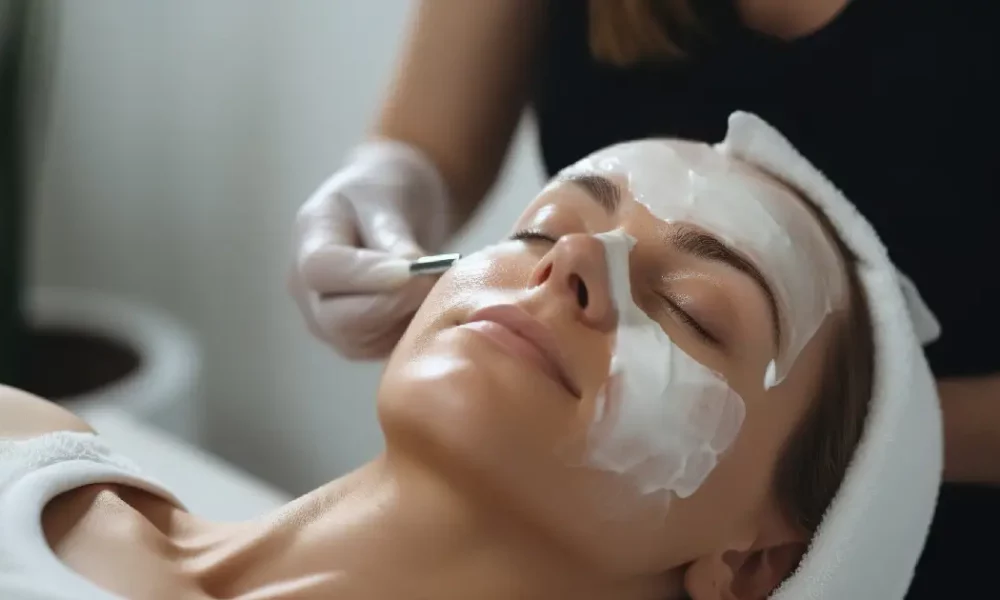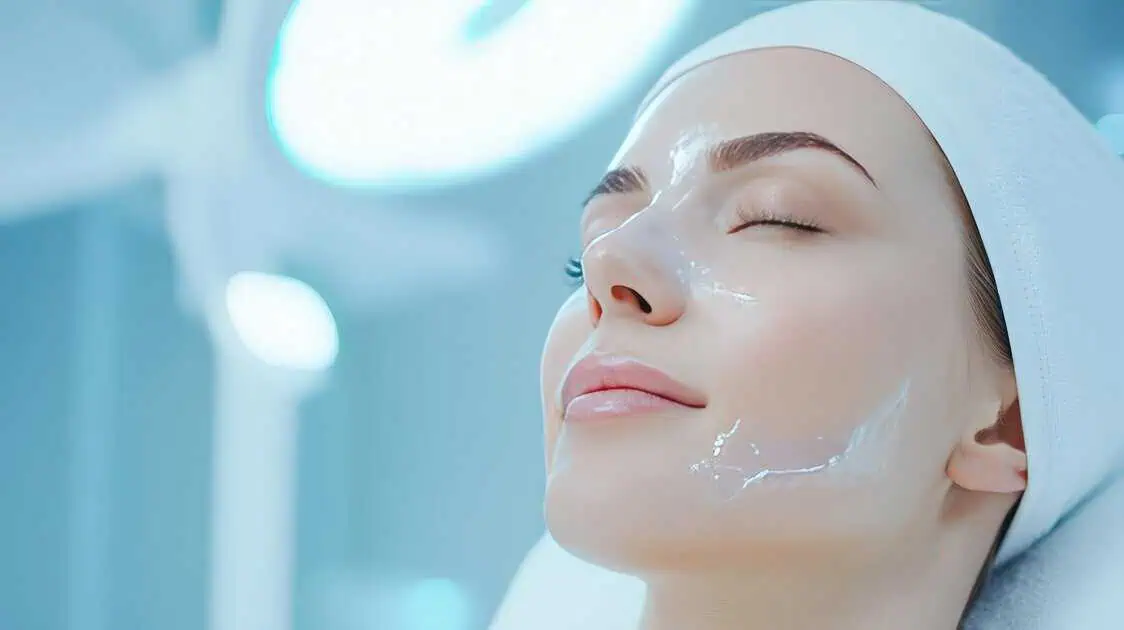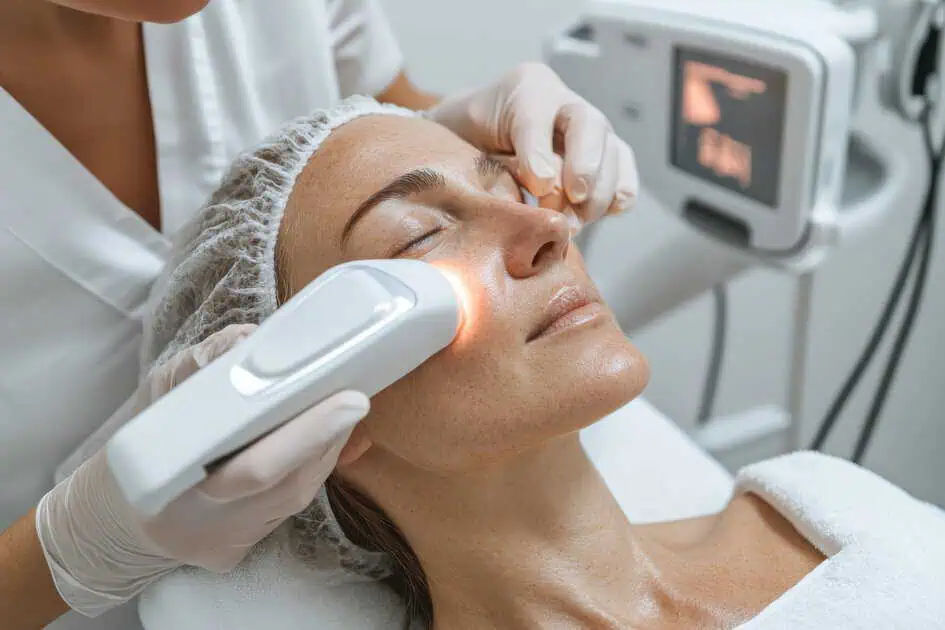Introduction
Chemical peels and laser treatments are top choices for attaining youthful, glowing skin. These methods are renowned for their ability to reduce aging signs, correct skin imperfections, and boost overall skin health. Let’s examine the specifics of each treatment to help you make an informed decision.
Introduction to Chemical Peels
Chemical peeling is a joint dermatological therapy used to improve the appearance of skin on the hands, neck, and face. After applying a chemical solution to the face, the old, damaged layers eventually exfoliate and peel off, revealing younger, healthier skin underneath.
Types of Chemical Peels
Chemical peels can be divided into three groups according to how deeply they pierce the skin:
- Superficial Peels: Often referred to as “lunchtime peels,” these procedures gently exfoliate just the skin’s surface layer using mild acids like alpha-hydroxy acid. This kind of peel is suitable for addressing dryness, uneven skin tone, acne, and fine wrinkles. It’s the mildest form of peel, with little to no downtime, making it a popular choice for those new to skin treatments.
- Medium Peels: Glycolic or trichloroacetic acid is used in these peels to penetrate the outer and middle layers of skin. Skin conditions include age spots, fine wrinkles, freckles, and mild skin discoloration that respond better to medium peels. They also reduce the appearance of mild scars. The recovery time for medium peels is slightly longer, with the skin needing several weeks to heal fully.
- Deep Peels: Using phenol or higher concentrations of trichloroacetic acid, deep peels penetrate several layers of skin and are used to treat more severe skin flaws such as deep wrinkles, extensive sun damage, and pre-cancerous growths. They offer dramatic results, but they require significant downtime and have a longer recovery period. Due to their intensive nature, they are also performed less frequently.
How Chemical Peels Work
At the start of the procedure, the skin is thoroughly cleansed. Next, small sections of the skin are carefully treated with the chosen chemical solution to produce a controlled wound that encourages the formation of new skin.
The time the solution stays on the skin depends on the type and depth of the peel. After the peel, the solution is neutralized, and the skin is cooled.
Benefits of Chemical Peels
Chemical peels can:
- Enhance the skin’s look and texture.
- Minimize the small wrinkles surrounding the lips and beneath the eyes
- Address wrinkles brought on by aging and sun damage.
- Enhance the look of light scars.
- Handle specific forms of acne.
- Diminish dark patches, freckles, and age spots.
Each type of chemical peel, from light to deep, offers unique benefits and targets different skin concerns. It’s essential to consult with a skincare professional to choose the type of peel that best suits your specific skin needs and goals.
Introduction to Laser Treatments
Laser treatments represent a modern, high-precision approach to skin rejuvenation and repair, utilizing focused light to improve skin conditions and enhance cosmetic appearance. These treatments are a great way to address a range of skin disorders since they can target particular skin layers while having little influence on neighboring tissues.
Types of Laser Treatments
Laser skin treatments fall into two main categories, each suited to different skin issues and recovery preferences:
- Ablative Lasers: These lasers effectively remove damaged surface cells by vaporizing the skin’s outer layers. They are used for more significant skin issues, such as deeper wrinkles, scars, and sun-damaged skin. Common types of ablative lasers include CO2 lasers and Erbium YAG lasers. While they offer dramatic results, the recovery time is longer, and they require more intensive post-treatment care.
- Non-ablative Lasers: These lasers target the underlying skin tissue without damaging the surface. Non-ablative treatments stimulate collagen production and skin rejuvenation and are used for fine lines, mild wrinkles, and moderate skin discoloration. They typically involve less downtime and are less invasive than ablative lasers. Examples include Nd: YAG lasers and pulsed-dye lasers.
How Laser Treatments Work
Laser treatments work by emitting concentrated light beams that precisely target and remove skin layers. The procedure triggers the body’s healing processes, resulting in new collagen and elastin development. The result is skin that is smoother, tighter, and appears younger and healthier.
Typically, a cooling gel is used after the skin has been washed. Protective equipment shields the powerful laser light from the patient’s and the practitioner’s eyes. The laser device is then passed over the targeted area, delivering quick pulses of light that treat the skin.
Benefits of Laser Treatments
Laser treatments offer numerous benefits, including:
- Precise control over treatment intensity and depth
- The ability to target specific skin problems without affecting surrounding tissues
- Long-lasting improvements in skin texture and appearance
- Enhanced skin tone and elasticity due to increased collagen production
These benefits make laser treatments a popular choice for those seeking practical solutions to skin issues, with options available for nearly every skin type and concern. However, to select the best kind of laser therapy and ensure it is applied safely, it is imperative to speak with an experienced dermatologist or cosmetic surgeon.
Chemical Peel vs. Laser Treatment: Which is Right for You?
In the end, the state of your skin and the outcomes you hope to achieve will determine whether you choose a laser treatment or a chemical peel. Here are a few considerations:
- Skin Type and Color: Laser treatments generally have a higher risk of changing the color of the skin, which makes chemical peels a safer option for darker skin tones.
- Desired Results: For deeper wrinkles and scars, ablative laser treatment might be more effective. For lighter fine lines and discoloration, a chemical peel might suffice.
- Recovery Time: Chemical peels generally require less downtime compared to the more intensive recovery needed for ablative laser treatments.
- Cost: Laser treatments can be more costly than chemical peels, depending on the type of laser used and the area being treated.
Consultation with a Professional
Choosing between a chemical peel and laser treatment should be based on a comprehensive consultation with a dermatologist or cosmetic skincare professional, who can evaluate your skin type, aesthetic goals, and medical history to recommend the most suitable treatment. Selecting a provider with specific experience in your chosen treatment is vital to guarantee the safest and most effective results.
Conclusion
Both chemical peels and laser treatments improve skin health and appearance; consulting with a dermatologist helps you choose the suitable method—gentle chemical peel or precise laser correction—to match your skin needs and lifestyle. At COMO Aesthetics, we offer a variety of chemical peels, from superficial to medium depth, tailored to rejuvenate skin by addressing concerns like wrinkles and sun damage, alongside non-ablative laser treatments—safe for all skin types and effective year-round for 36 different FDA indications including melasma, acne, and spider veins—with minimal discomfort and downtime. Discover the transformative power of skincare, where you can choose between our tailored chemical peels for vibrant, rejuvenated skin or our versatile, non-ablative laser treatments that tackle everything from wrinkles to rosacea with minimal downtime—perfect for any skin type, any time of year.





